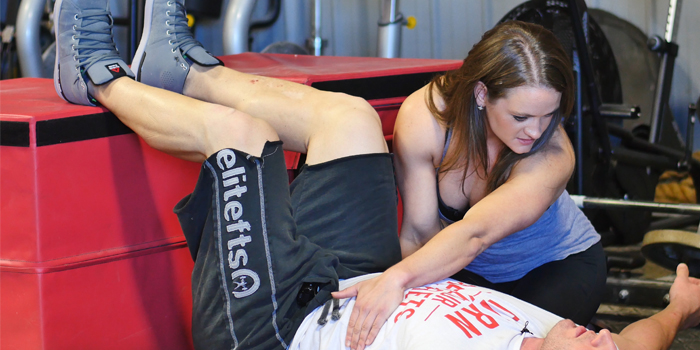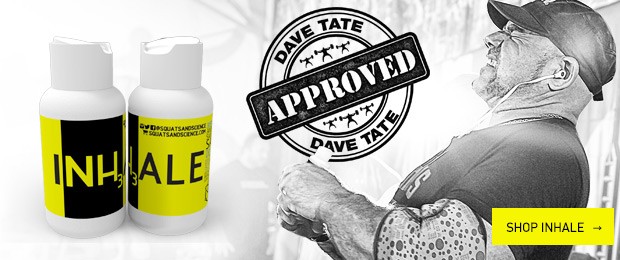
You must have a willingness to change what and how you think about training. Most lifters who have been around a long time (I’d put this timeline at 10 years or more) will tell you that, at some point, they changed how they think about their training. The immediacy and need for instant gratification, even in a 12-week prep, decreases, and their vision changes from 12 weeks (which is a short timeline when you consider it) to three to five years and beyond. Most times, this comes after significant injury; it comes out of necessity.
RECENT: 5 Training Staples for Your Off-Season
Our generation is full of new lifters. We’re addicted to the relatively quick gains that come in two to three years. Without realizing it, our mindset gradually shifts to keep up with our quick changes. We take from our body, pushing our emotional expectation leaps and bounds, continually reframing our expectations throughout the course of a year. Or even months. Most times, a perpetual change in expectations in a course of months is seen in high-stress situations, positive or negative (eustress/distress), but for those of us lifting less than three to five years, it’s a constant, inadvertently.
That probably isn’t the norm for people with other hobbies or lifestyles. At some point, the narrative for many of us merges: we get hurt. Not the aches that come from being a little generally beat up, but the kind of hurt that rattles your cage. We have one injury. And then another. And new aches start to develop, and we wonder if we’re ever going to get back to that same level of gain, never stopping to think that our expectations and how we think about training needs to change.
David LaMartina is a competitive 220-pound and 242-pound class lifter who can get through absolutely brutal sets of 12, 10, and eight reps unlike most I’ve seen. He’s built size, strength, and stability over a decade, and had injuries accumulate over that time, but has adjusted his expectations to some degree. However, even for someone incredibly logical, his routine of training caught up to him and caused him to pull out of multiple meets, miss or significantly reduce training sessions, and overall feel like he’d been reeling from one injury to the next until sidelined, unsure of what to do at all anymore.
“The tensor fasciae latae (TFL) and hamstring tears—the injuries that really started this whole injury cycle—were different than the other nagging injuries I’ve always had. It was easier to train through tendonitis and nagging aches and pains. I took 705 for a [squat] double in preparation for the LA Fit Expo and my knee hurt like a bitch, but it wasn’t the kind of pain that made me feel like I was putting my ability to train in the future in jeopardy. This felt different. The sensation of the tear was so much more visceral and intuitively felt like something that would compromise my ability to train long-term, not just compete in one meet. It’s made me look at how much I really enjoy the longevity of training itself, not just competing.”
Before we met I’d seen enough showings of David on the “King of the Lifts” handle on Instagram. When he pulled out of Boss of Bosses III and reached out for physical therapy because he couldn’t do his notoriously grindy-yet-successful sets of 6000 reps, or even doubles, he was serious that he didn’t want to lose his ability to train — and a little freaked out. He had a reputation for training far beyond where most of us are willing to go…and then going further. The man, quite frankly, loves to train and has been at it longer than I’ve acknowledged barbells exist. He told me he’d now pulled out of multiple meets after injury pileup, and at the fear of actually not being able to train, knew something needed to change but didn’t know where to start.
After being off the platform for two years, a ton of work, and more trust than I think I’ve had from an athlete, he got back on the platform December 9, healthy, and repeatedly telling me, “Training is awesome when you don’t hurt! I forgot what this feels like!” It’s almost like this whole rehab process, I don't know, works when it’s done right. Unintended snark, but appropriate. We habitually and wishfully think we’re out of the woods far before we actually are, and usually end up back in it. I know you get this; we teeter on the brink of “knowing we’ll rehab fine" and “come back stronger,” but if we’re honest, we’ve also felt that fear of wondering what will happen if we don't. What if I never take a heavier squat than I’ve taken? What if my (back, hip, elbow, shoulder) pain only maintains status quo at the expense of every other part of my body?
Dave incurred a TFL tear preceded by a gnarly bout of quad tendinopathy, chronic right hip pain, followed almost immediately by a left hamstring tear. You can bet he’s had some SI issues. You see the pattern? It starts somewhere, but there are only so many places your body will give a little extra before it runs out of room. Dave’s honesty with me showed me something that we need to acknowledge: the love for and desire to train year-round is entirely different than stepping on a platform a few times a year. This is a pretty huge paradigm shift for our generation.
We’ve shifted from training hard to compete against the best, not knowing who will show up, to our current generation where we get on a platform and people tell us how amazing we are and we expect it. I’d venture to wager that (this won’t sit nicely) for a lot of competitors, the reward of having friends and family (or people on the internet you’ve never met) tell you how awesome you are is the end outcome. And there is no shame or judgment in that. Belonging is a basic human need. For some of us, the sense of belonging and training is far more long-term than competing. If you’re reading this article, you’re likely in that group. When the threat of losing training finally hits after a round of injuries, as it did for Dave, you have an opportunity to do things right.
The first step is being willing to change how you train and how you think about training.
When I asked Dave what changed when he actually got better and stopped hurting, we both agreed that it was that he changed the way he thought. Doing this is the most common trait I see in lifters who really do get out of the woods. This shift in mindset changes everything about how you train, especially during a rehabilitative phase.
When asked what his biggest changes to his thought process were, when that switch flipped, here’s what he said:
1. Embracing New Ways of Training
“I had to embrace new ways of training that I would have thought were too light, low effort, or low on the RPE scale."
I asked him, realistically, if training was still hard, knowing that he’s a guy that loves to train hard:
“Yes. Definitely. I think most injuries happen due to a breakdown in technique that, when the weight gets heavy and that pattern is performed repeatedly, cause problems. Fixing that and still hitting volume, I was wiped after those sessions. Everything had a purpose and intent. It was never just sets and reps.”
2. Focusing on the Scope of Process
“Being frank, I had to accept that this [training] is a long-term process. On any given day, you can have your programming, [but] you’re going to have to take what the day gives you. You’ll make a choice, picking a PR in a pet lift and pushing right up to or beyond the brink of injury, or playing it safe so you can actually get back in and keep training the rest of your cycle, which is what I want.”
This isn’t about sandbagging, but more about recognizing that, in the multitude of factors that influence how well your training will go (on a best or worst case scenario), there is going to be variation from day to day. Prepare yourself for that, especially when you’re in a phase where attention to detail (proprioception, bar speed, where your bar path actually is, what you feel working and engaged, etc.) matters a ton. Being able to stay in the game for your whole block is ultimately going to give you better results, but we don’t think that way; many of us haven’t been training long enough to recognize that long-term means a decade or more of training heavy.
Dave said it really well:
“The strength and structure that I’ve put together over the last 10 years doesn’t disappear over a couple of months. The flip side to that is that mobility that I’ve neglected for 10 years that has become more rigid every year doesn’t correct fully in two or three weeks.”
Keep a broader scope.
3. Choosing Challenges Carefully
“Accepting that I’m maybe not going to get back to my personal bests on everything [was a big change]. We all have those pet exercises we love to do, probably because that exercise permits us to use our strong suit or cheat through where we actually need work. For me, this was super heavy, super low, high rep, high bar squats. I loved the challenge they gave me and the fact that I could do something a little absurd in training, but ultimately, I learned that they flared up and overstressed my particular mechanics and injuries. I miss doing them, but not at the expense of being able to train hard and heavy with everything else.”
Yes, a textbook will tell you that based on leverages, certain lifts bring up weak points, so challenge something else, etc. Great. Your textbook and even some "evidence-based" stuff may not be your reality. Trust yourself with that. If something is “supposed” to work your quads but you feel something off then think about your mechanics, somewhere, and change that. It’s certainly worth finding out why and correcting, but beating your head into a wall and doing something repeatedly just because it’s "supposed" to do something is not in your best interest, no matter what an article or textbook tells you. These are the nuances of experience and part of why internet experts struggle to help people actually feel better.
4. Being More Fluid
“I also know that may not always be the case. We like to have an 'always' or 'never', but through this process, I’ve had to change my rigidity of thought and be more fluid rather than absolutist. Maybe at some point, a particular variation that should, by textbook definition, bring up my weak point and doesn’t...maybe that changes as my mechanics improve and I can put them back in.”
Dave had gotten so used to training with some injury and knew he needed to change. He is one of the hardest working lifters I’ve met and is willing to train through just about anything. For him to step off the platform had to take some significant injury, but he has successfully come back on. This series will outline how he did it, and much like when Casey was rehabbing, what he learned in the process.










